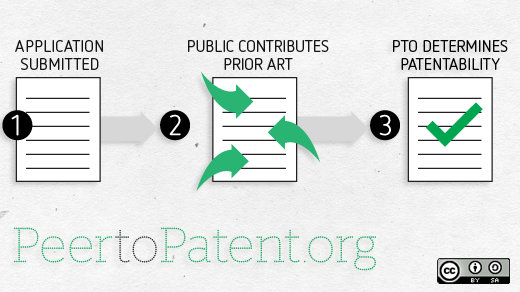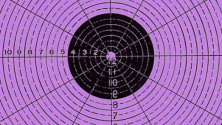The willingness to collaborate brought us free and open source software. Now we continue to see that willingness to collaborate permeate our government agencies. A prime example is the Peer To Patent program developed at New York Law School by Prof. Beth Noveck. First presented as an idea on her July 2005 blog Peer to Patent: A Modest Proposal, Peer To Patent has become an early success story in actively engaging the public to improve the quality of government decision making.
Peer To Patent works by posting patent applications that have been voluntarily submitted by their owners to the Peer To Patent review process. Once posted, any member of the public may come to the Peer To Patent website, www.peertopatent.org, and participate in a discussion about the merits of the patent and what might constitute prior art, documentary evidence that someone had previously invented the same device or process (novelty) or that the device or process is merely a combination of previous devices and processes and does not include an inventive step, i.e., anyone knowledgeable in the subject matter would have seem the logic in creating the combination (non-obviousness).
The collaborating peers then search for the prior art to document their views and post it to the Peer To Patent site. Importantly, both the posting peer and others may then annotate the posted prior art to note why it is relevant to the pending patent applications. After a few months of this give and take, the posted prior art and related annotations are compiled by New York Law School students into an information disclosure statement that is then submitted to the U.S. Patent and Trademark Office. Patent examiners then have this information available to them to assist in their determination of whether a patent should be granted.
To date New York Law School's Center for Patent Innovation and the U.S. Patent and Trademark Office have run to one-year pilots. Over 200 patent applications were submitted for review, and in about 15% of the cases the Peer To Patent prior art made a meaningful contribution to the examination, particularly by identifying non-patent prior art (patent prior art consists of issued patents and pending patent applications; non-patent prior art consists of journal articles, documentation, and other similar material). While 15% may not seem like a lot, this represents only the improvement made by Peer To Patent; in many more cases the patent examiners were, on their own, able to find the same prior art as the Peer To Patent reviewers. Peer To Patent has been recognized by the White House as part of the Open Government Initiative.
In addition to the U.S. pilot projects, IP Australia has run a Peer To Patent - Australia pilot project in conjunction with Queensland University of Technology with technology assistance from New York Law School. The results of that pilot are now being compiled, but it appears the results will be quite similar to those in the U.S. Later in 2010 the Institute of Intellectual Property in Japan plans to run a Peer To Patent pilot in conjunction with the Japan Patent Office.
Since the conclusion of the second U.S. Peer To Patent pilot in October 2009 the USPTO and New York Law School have worked together to evaluate the program and plan its future. The evaluation concluded that the program has merit, but questions of best implementation remain. In the long term it is likely that the USPTO will incorporate the collaborative aspects of Peer To Patent into standard practice. In the short term it is likely that the USPTO and New York Law School will run a third pilot to commence some time later this year.







2 Comments